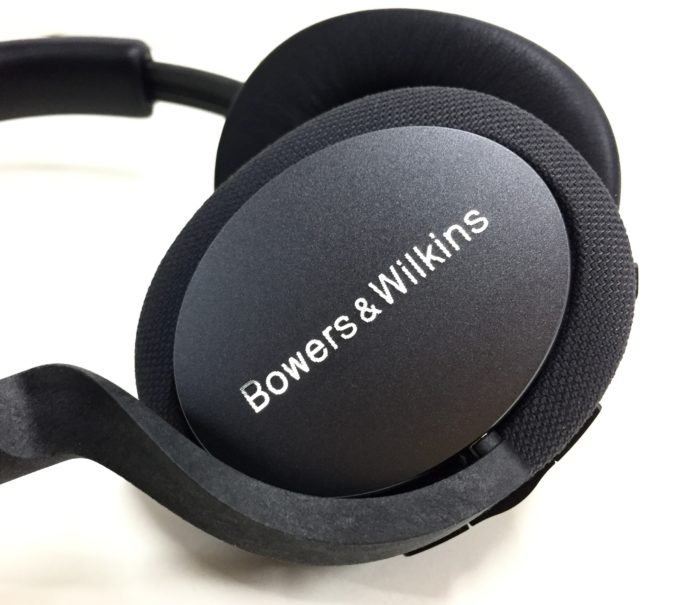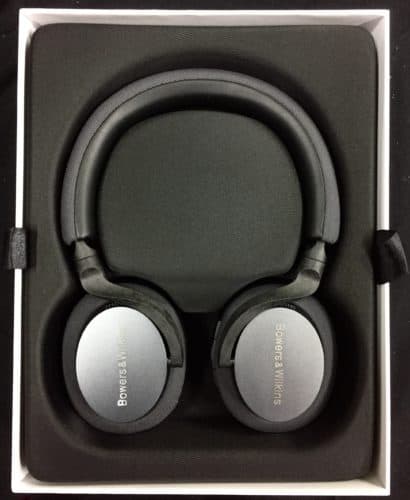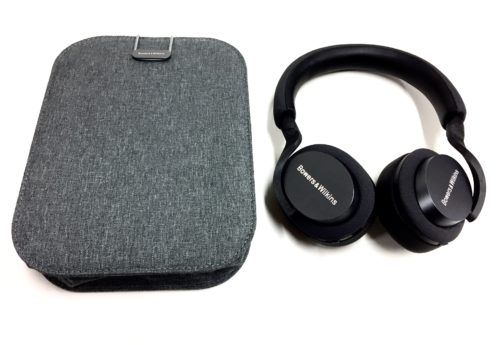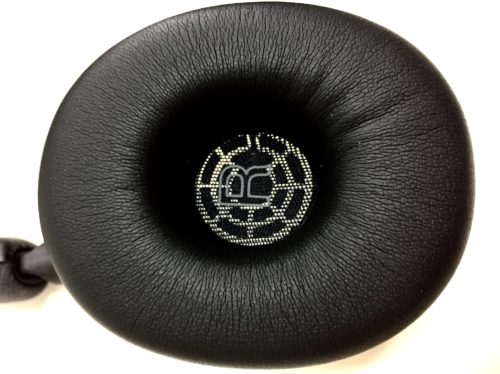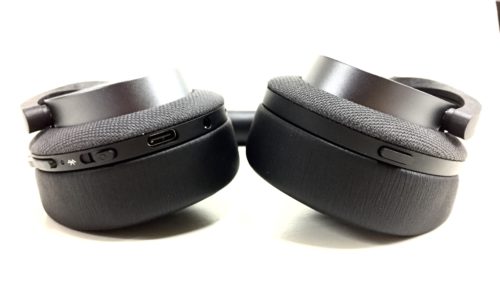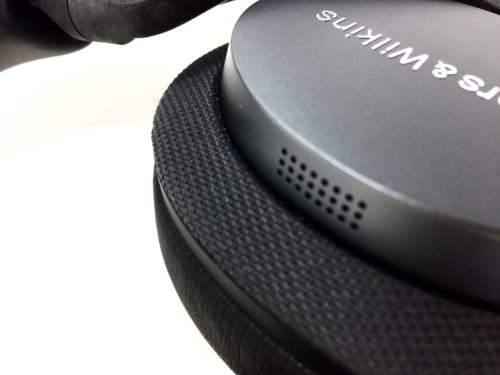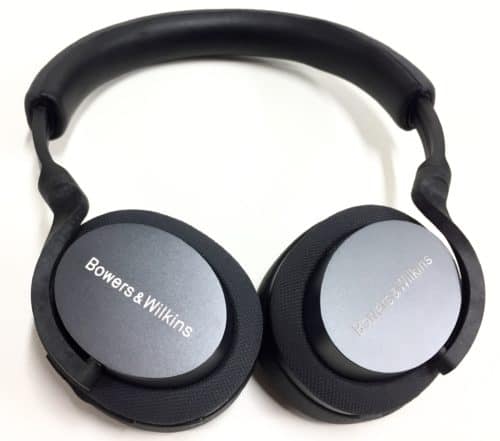Reading Bowers & Wilkins’s own description of their new PX5 headphones, I couldn’t help but chuckle at one of their captions. “Inspired by race cars.” And it’s a deft marketing trick, for sure: companies like Bowers & Wilkins know that luxury headphone owners love their cars. In many ways, the PX5 remind me of cars, but not necessarily pure race cars. Instead, I’m reminded of a luxury vehicle that intends to mate performance with comfort.
But that’s all in the feel of the headphones. And so the question remains: do they perform well? I’ve put them through their paces, and I think they have a sound that many people will like.
In the Box
- Bowers & Wilkins PX5 headphones
- USB-A to USB-C cable for charging
- 3.5mm cable for wired playback
- Very nice semi-hard carrying bag
- Quick guide & safety & warranty booklet
Comfort and Build
The PX5 looks good and it’s comfortable. There is some plastic involved in the build, especially in the yokes that hold the earcups. That plastic has a sort of a pleasing roughness, though, as if it were made to look like metal. One wonders why they didn’t just use metal.
Bowers & Wilkins also uses a mesh fabric material, much like the material used in many car seats (perhaps intentional!). This is found on the top of the headband, as well as on the outer parts of the earcups.
The very outside of the earcups, however, are made of metal, and have “Bowers & Wilkins” printed on them in this very nice raised, striated text.
The earcups are made of soft pleather, and I don’t anticipate that anyone will find them lacking – they’re very soft and thick.
My biggest problem with the PX5 is the headband. The earcups don’t extend far enough. I mean, they do extend far enough for me, but it’s not like I have the world’s largest head – I usually only have to extent the headband by a few clicks, but with the PX5, I can easily go all the way to the furthest limits without making it too long for my ears. I’d suggest that larger-headed people try these out ahead of time, as they might find them too small.
Functionality
The Bowers & Wilkins PX5 provides a “full package” of functions: Bluetooth 5.0 connectivity, a 3.5mm cable for wired playback, adaptive noise cancellation, and an impressive 25 hours of playback.
Connectivity worked fine. I never experienced any interruptions, which is more than can be said for most headphones. What came to me as a pleasant surprise (because I didn’t look at the product page before starting to listen) was the headphones’ ability to sense whether they were on my head. Take them off, and they’ll automatically stop playing your music; put them back on and they’ll start it up again. It’s not an absolutely essential function, but it’s a nice little touch.
The PX5’s ANC was fine, but nothing special. I wasn’t immediately cocooned in silence upon turning the ANC on, and there was a tiny bit of a hiss. It was able to silence the dronier lower frequencies of our loud office heating system, but not the higher, noisier frequencies.
Sound
The Bowers & Wilkins PX5 sounds about how I’d expect it to: warm, smooth, and inoffensive. These headphones don’t allow you to scope out minute details in the mix – that’s not what they were made for. But they also don’t come with any of the accompanying flaws. There’s no harshness, no sibilance, not much audible grain.
My one complaint here is that these headphones are a little boring. Bowers & Wilkins is going for a sound here that will please the average music listener, so I have to understand that they aren’t really trying to please me. But I think they’ll be a bit polite for listeners who want to really feel the music, and I’ll get more into what I mean by that here.
Bass
The bass in these headphones is pretty good. It reaches deep, it’s a bit boosted (just a bit), and it’s tight. The overall sound of these headphones is warm, and that starts with the bass. There’s decent slam – decent, but not outstanding.
The bass does sound a little laid-back. It’s enveloping, not pulse-pounding. I’d say it has a tendency to be a little one-note – when listening to stuff that really has to pound, the bass doesn’t quite give me what I want. It’s there, and I can hear it, but I can’t feel it. I think a lot of that has to do with the overall laid-back sound of the headphone, though – in other words, it’s not just a property of the bass, but may instead be a psychoacoustic thing having to do with the whole frequency response.
Mids
As I said – warm, smooth, laid-back. These mids don’t sound unnatural or stifled, but they are clearly tilted toward the lower mids, with the upper mids sitting in the background. As a result, they can sound a little dull or unclear with, say, classical music, or other genres that demand clarity.
Basically, Bowers & Wilkins has gone for a sound that can only be characterized as “pleasant.” These operate the way a really comfy luxury car operates: even when you’re hurtling down the open California freeway at over 100 mph (in this metaphor, that’s playing metal music or something), you never feel stressed. But you also feel a bit detached from your surroundings.
Treble
The laid-back quality of the upper mids also affects the treble. The PX5’s top end isn’t muted, but it sits in the background. These headphones don’t sound airy nor bright, and they sure as hell never sound sibilant. But as a result, you lose a lot of sense of detail that you might get with other headphones.
Overall, I get the feeling that the PX5 is a little bit stunted when it comes to resolution. That comes as no surprise to me – very few ANC BT headphones go for a “detail-oriented sound,” although the market does provide a couple. Even those that do typically fall very slightly short.
Soundstage
The imaging on these headphones ain’t bad, but the soundstage is overall pretty crowded. Compared to some other headphones, the PX5 made the music sound small. That may partially come from the on-ear design, but I’ve heard much larger-sounding on-ears in my life. The soundstage here speaks to an overall lack of involvement inherent in the PX5’s sound.
Pros and Cons
Pros: Comfort, functionality, appearance, pleasant sound
Cons: They sound too polite for me, less-than-perfect ANC
In Conclusion
The Bowers & Wilkins PX5 provides a great package for frequent travelers who want a smart-looking, comfortable pair of on-ear headphones. They sound fine – uninvolving, perhaps, but never unpleasant.
At $300, the PX5 is a pricey little headphone, and much of that cost is going into build quality and looks. Do these live up to the $300 price point? They do beat some of their competitors – I would take them over Bose for sound quality (but not ANC), for example. But I’m also the type of person who would sacrifice looks for a slightly better-sounding, cheaper, but worse-built and less-well-known pair of headphones. So it all depends on you.
You can find the PX5 for the best price at Audio46 or Amazon.
As a disclaimer, MajorHifi may receive commissions from retail offers.
See how these headphones place in our ranking tool.
MAJORHIFI may receive commissions from retail offers.


